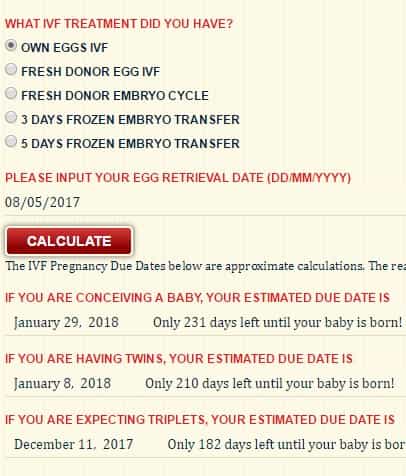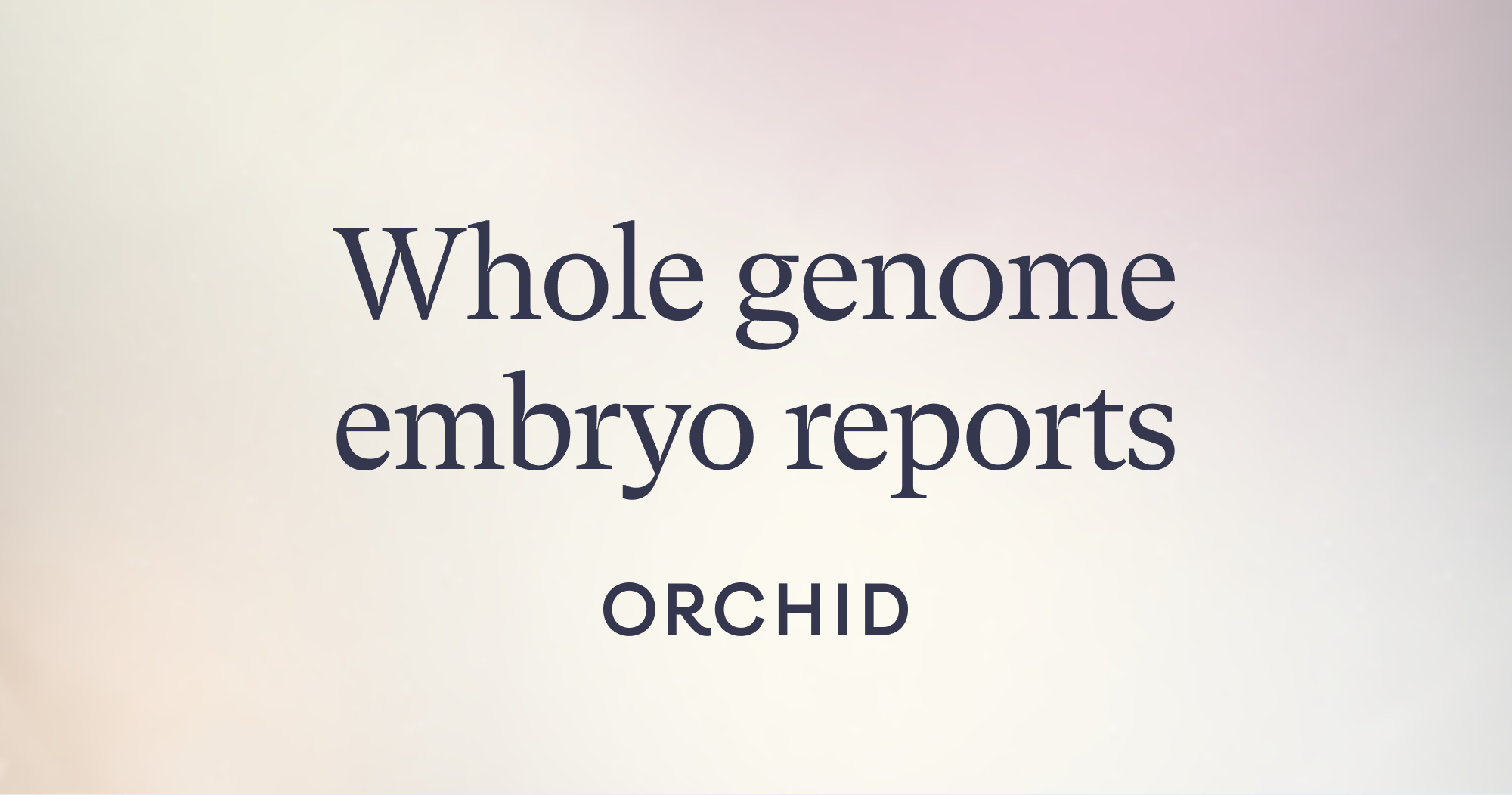
How Much Does IVF Cost in Indiana? Your Complete Guide to Affording Fertility Treatment
April 20, 2025
How Much Does IVF Cost in North Carolina? Your Complete Guide to Affording Fertility Treatment
April 20, 2025How to Figure Out Your Due Date with IVF

How to Figure Out Your Due Date with IVF
Congratulations! If you’re reading this, you’re likely on an exciting journey through in vitro fertilization (IVF) and dreaming about the day you’ll meet your little one. One of the first questions that pops up after a successful embryo transfer is, “When will my baby arrive?” Unlike natural pregnancies, where due dates can feel like a bit of a guessing game, IVF offers a unique advantage: precision. With exact dates for egg retrieval and embryo transfer, calculating your due date becomes less of a mystery and more of a science. But it’s not as simple as counting nine months on a calendar—there’s a little more to it than that.
In this guide, we’ll walk you through everything you need to know about figuring out your IVF due date. From understanding how doctors calculate it to exploring why it might shift, we’ll cover the essentials and dive into details you might not find elsewhere. Whether you’re curious about the difference between a Day 3 and Day 5 embryo transfer or wondering how your age might play a role, we’ve got you covered. Plus, we’ll sprinkle in some fun interactive bits to keep you engaged and share practical tips to help you plan for the big day. Ready? Let’s get started!
Why IVF Due Dates Are Different from Natural Pregnancies
When you conceive naturally, your due date is usually based on the first day of your last menstrual period (LMP). Doctors add 280 days (about 40 weeks) to that date to estimate when your baby might arrive. But here’s the catch: not everyone ovulates exactly 14 days after their period starts, and fertilization could happen a few days after that. So, that “280-day rule” is really just an educated guess.
With IVF, things are different—and honestly, a little cooler. You’re not guessing when ovulation happened because the process is tightly controlled. Doctors know the exact day your eggs were retrieved, fertilized, and transferred into your uterus. That precision gives you a head start in pinning down your due date. Instead of relying on a menstrual cycle that might vary, IVF due dates hinge on two key moments: the egg retrieval date and the embryo transfer date. It’s like having a backstage pass to your pregnancy timeline!
But don’t get too attached to that date just yet—babies, even IVF ones, love to keep us on our toes. We’ll explore why that is later on.

The Basics: How Doctors Calculate Your IVF Due Date
Let’s break this down step-by-step so you can see how the magic happens. Calculating an IVF due date depends on whether you had a fresh embryo transfer or a frozen one, and how old the embryo was when it was transferred (usually 3 or 5 days). Here’s the scoop:
Fresh Embryo Transfer
For a fresh IVF cycle, your eggs are retrieved, fertilized, and transferred a few days later—typically on Day 3 or Day 5 after retrieval. Doctors use this timeline to figure out your due date:
- Day 3 Transfer: If your embryo was transferred 3 days after egg retrieval, add 263 days to the retrieval date. Why 263? It accounts for the 3 days the embryo has already been growing plus the remaining 260 days (about 37 weeks) of pregnancy.
- Day 5 Transfer: If it was a 5-day transfer (also called a blastocyst transfer), add 261 days to the retrieval date. The embryo’s a little older, so it’s 2 days closer to full term.
For example, if your eggs were retrieved on April 1, 2025, and you had a Day 5 transfer on April 6, your due date would be roughly December 23, 2025 (261 days from April 1). Pretty neat, right?
Frozen Embryo Transfer (FET)
With a frozen embryo transfer, the process shifts slightly. Your embryos might have been frozen years ago, but the due date is calculated from the transfer date, not when they were first created. Here’s how it works:
- Day 3 Frozen Embryo: Add 263 days to the transfer date.
- Day 5 Frozen Embryo: Add 261 days to the transfer date.
So, if you transferred a Day 5 frozen embryo on April 10, 2025, your due date would be around December 27, 2025. The freezing part doesn’t change the math—it’s all about when the embryo lands in your uterus.
Quick Calculation Table
Here’s a handy cheat sheet to keep it simple:
| Transfer Type | Days to Add to Retrieval/Transfer Date | Example Date (April 1 Retrieval) |
|---|---|---|
| Fresh Day 3 Transfer | 263 days | December 20, 2025 |
| Fresh Day 5 Transfer | 261 days | December 18, 2025 |
| Frozen Day 3 Transfer | 263 days (from transfer) | Varies by transfer date |
| Frozen Day 5 Transfer | 261 days (from transfer) | Varies by transfer date |
Interactive Quiz: What’s Your IVF Due Date?
Want to test your skills? Take this quick quiz! Imagine your egg retrieval was on March 15, 2025, and you had a fresh Day 5 embryo transfer. When’s your due date?
A) November 30, 2025
B) December 1, 2025
C) December 2, 2025
Scroll to the bottom for the answer—but try figuring it out first! (Hint: Add 261 days to March 15.)
Why Day 3 vs. Day 5 Matters
You might be wondering, “Why does 2 days make a difference?” It’s all about the embryo’s head start. A Day 3 embryo has been growing for 3 days outside your body, while a Day 5 embryo (a blastocyst) has had 5 days. By Day 5, it’s more developed and closer to the stage where it would naturally implant in a regular pregnancy. That’s why the due date shifts slightly—it’s like the embryo’s saying, “I’m already a few steps ahead!”
Doctors often prefer Day 5 transfers because blastocysts have a higher chance of implanting successfully. But if you had fewer embryos or specific medical reasons, a Day 3 transfer might’ve been the way to go. Either way, the math adjusts to match the embryo’s age, keeping your due date on point.
What Can Shift Your IVF Due Date?
Even with IVF’s precision, your due date isn’t set in stone. Babies don’t always follow the calendar, and a few factors can nudge that date around. Here’s what to watch for:
Early Ultrasounds
Around 6-8 weeks, your doctor will do an ultrasound to measure the embryo’s size (called the crown-to-rump length). If it’s growing faster or slower than expected, they might tweak your due date. For example, if your Day 5 transfer says December 18 but the ultrasound suggests December 22, they’ll likely go with the later date. Ultrasounds are super accurate early on, so they often get the final say.
Multiple Pregnancies
If you’re carrying twins (or more!), your due date might not budge on paper, but delivery often happens earlier. Twins typically arrive around 36-37 weeks instead of 40. So, while your calculated due date might be December 18, you could meet your little duo in late November.
Your Health and Age
Maternal health can influence when baby arrives. Older moms (over 35) or those with conditions like high blood pressure might deliver earlier due to medical needs. It’s not common, but it’s something to keep in mind.
Baby’s Growth Patterns
Every baby grows at their own pace. If your little one is measuring ahead or behind, your doctor might adjust expectations. This doesn’t change the official due date much, but it could affect planning for delivery.
✔️ Tip: Don’t panic if your due date shifts a little—only about 4% of babies arrive exactly on time, IVF or not!

The Science Behind IVF Due Dates
Let’s geek out for a minute. The 261- or 263-day countdown isn’t random—it’s rooted in how long a pregnancy lasts from conception. In a natural pregnancy, conception happens about 14 days after your LMP, leaving 266 days until birth (38 weeks). With IVF, conception happens in the lab on the retrieval day, and the embryo’s age at transfer (3 or 5 days) adjusts that timeline.
Research backs this up. A 2005 study in Ultrasound in Obstetrics & Gynecology found that IVF pregnancies dated from embryo transfer were more accurate than LMP-based estimates for natural pregnancies. Why? Because IVF eliminates the guesswork of ovulation timing. Pretty cool, huh?

Practical Tips for Planning Around Your IVF Due Date
Knowing your due date is just the start—now it’s time to plan! Here are some ideas to make the most of it:
- Mark Your Calendar: Once you’ve got the date, plug it into your phone and set reminders for key milestones—like your first ultrasound or when to start prepping your nursery.
- Build a Buffer: Babies can arrive 2-3 weeks early or late, so plan flexible dates for things like maternity leave or baby showers.
- Talk to Your Doctor: Ask how they’ll confirm the date with ultrasounds and what to expect if it shifts.
- Prep Early: Stock up on essentials (diapers, clothes, etc.) a month or two ahead, especially if twins are possible.
❌ Don’t: Obsess over the exact day—think of it as a target, not a deadline!

